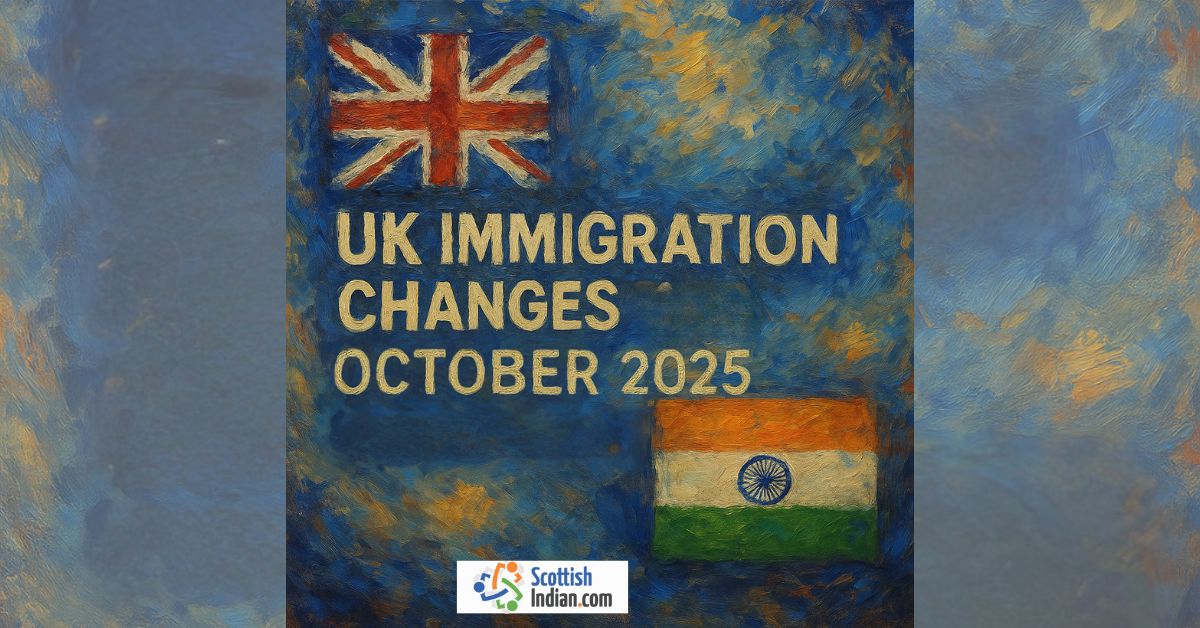The UK’s Home Office has rolled out another major update to its immigration framework, the Statement of Changes to the Immigration Rules (HC 1333, 14 October 2025). While these revisions impact applicants from around the world, they carry particular weight for Indian nationals, who make up one of the largest groups of international students and skilled professionals in the UK.
So, what’s changing and how should Indians preparing to study, work, or settle in Britain respond?
Let’s break it down.
🔍 The Big Picture
The new rules, effective from October 2025 through January 2026, refine how the UK manages migration, work routes, and settlement.
They reflect the government’s ongoing agenda to tighten standards, improve integration, and streamline rule consistency but also to reduce net migration.
For Indians, these changes will reshape familiar visa routes like the Graduate, Skilled Worker, and High Potential Individual pathways.
Also read our feature on UK’s Immigration Reforms.
🇮🇳 Key Changes Affecting Indian Applicants
1. Higher English Language Requirement (B1 → B2)
Starting 8 January 2026, applicants for economic routes, including Skilled Worker, Scale-up, and High Potential Individual must meet B2-level English proficiency instead of the current B1.
The British Council IELTS Guide offers resources and test preparation to achieve this new level.
👉 What it means:
Many Indian applicants will need to invest more time in preparation or re-take English tests. B2 demands a stronger command of spoken and written English roughly equivalent to an upper-intermediate skill level (IELTS 5.5–6.5 range).
2. Graduate Route Shortened to 18 Months
The popular Graduate Visa, which allows international students to stay and work in the UK after completing their studies, will now be cut from two years to 18 months (for non-PhD graduates).
You can check the UKCISA guide to post-study work options for more on eligibility and switching options.
👉 Impact on Indian students:
With over 140,000 Indian students currently in the UK, this is a major change. It reduces the time to secure sponsorship or switch to another visa.
PhD graduates will still receive 3 years, but most master’s and bachelor’s students must act faster.
For comparison, read our analysis: Why UK is becoming the top choice for Indian Students in 2025 and explore ways to fund your UK degree through our new feature — Top 10 Scholarships for Indian Students in the UK (2026 Edition).
3. Capped High Potential Individual (HPI) Route
The HPI visa, designed to attract graduates from top global universities, will now be capped at 8,000 places annually.
While the eligibility list will expand, competition will rise.
Applicants can review degree equivalency or language certification through UK ENIC.
👉 Impact:
Indian graduates from elite universities (like IITs and IIMs) may still qualify, but timing will be crucial. Apply early each year before the quota fills.
4. Unified “Suitability” Rules
The old “Part 9: Grounds for Refusal” is being replaced by a new Part Suitability framework that applies across visa categories.
👉 In practice:
Every applicant, student, worker, or dependant, will be assessed under one consistent (and potentially stricter) standard.
Issues like past overstays, incorrect information, unpaid NHS or tax debts, or criminal cautions can now weigh more heavily.
5. Opportunity to Switch into the Innovator Founder Route
Students can now switch directly from their Student visa into the Innovator Founder route, provided they have an endorsed business plan.
👉 Why it matters:
This offers ambitious Indian students a chance to build a startup in the UK without having to leave and re-apply from abroad.
6. Updated Maintenance & Documentation Rules
Financial thresholds and documentation requirements for students and dependants have been revised.
Applicants must show higher proof of funds, having aligned more closely with UK living costs.
You can verify the latest fee tables on Gov.uk – Home Office Visa Fees (July 2025).
👉 Tip:
Check the latest Home Office maintenance tables before applying. Even minor shortfalls can result in visa refusal.
⚖️ Why These Changes Matter for Indians
Indians now represent nearly one in four UK student visa holders and a growing share of work visa approvals.
These updates will therefore have ripple effects on:
- Study and work transition timelines
- Graduate job competition
- Sponsorship availability
- Startup and innovation pathways
- Long-term settlement planning
Essentially, the UK is signalling: “Come prepared, come skilled, and integrate quickly.”
💡 Smart Steps for Indian Students and Professionals
- Upgrade English Skills Now
Aim for B2 proficiency (IELTS ≥ 6.0). Taking the test early can help you apply under the current B1 threshold if you act before January 2026. - Plan Graduate Visa Time Wisely
With only 18 months available, line up potential employers or sponsors before finishing your course. - Apply Early for Capped Routes
For routes like High Potential Individual, early application could make the difference between success and waiting a year. - Keep Clean Immigration Records
The new suitability test is unforgiving. Avoid overstays, fines, or unpaid dues. Transparency is critical. - Explore Entrepreneurial Paths
If you have a startup idea, explore Innovator Founder options early and universities often have accelerators or endorsing bodies that can help. - Stay Updated on Rule Dates
HC 1333 introduces staggered start dates (October 2025 to January 2026). Apply under the rule version most beneficial to you.
🧭 A Quick Example
Imagine Aditi, a postgraduate from Delhi studying in Glasgow.
She finishes her master’s in July 2026 and wants to stay in the UK. Under the new rules:
- She’ll have 18 months instead of two years to find a skilled job.
- She’ll need B2 English to qualify for most work routes.
- If she’s working on a fintech startup, she could switch to Innovator Founder without leaving the UK.
Planning ahead is the difference between opportunity and setback.
The October 2025 rule changes are part of a broader shift toward a selective, skill-driven, and compliance-focused immigration system.
For Indian nationals, whether students, workers, or entrepreneurs, this means:
More hurdles, but also more structured pathways to stay and succeed.
Preparation, timing, and awareness will be the key.
The UK continues to welcome Indian talent but the bar to entry and stay is rising.






